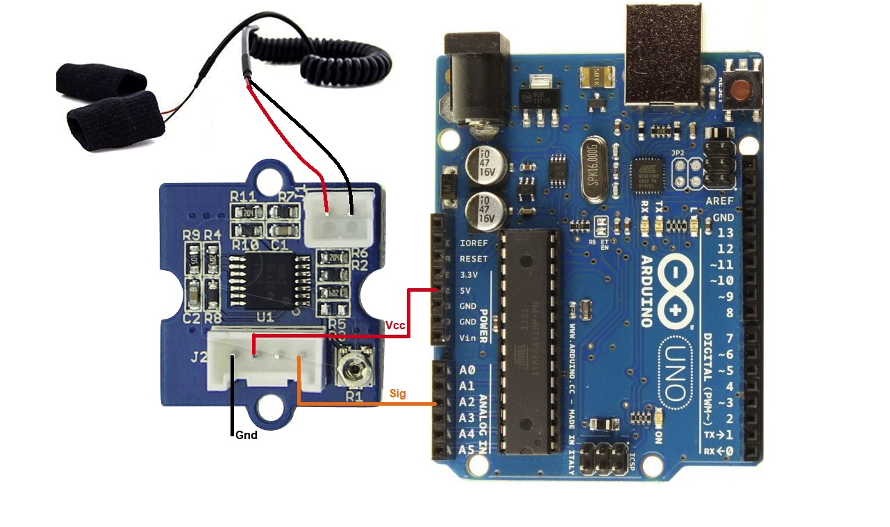
Galvanic Response Sensors Skin Conductance Response
Galvanic Skin Response (GSR). Using PowerLab as the foundation of your data. Galvanic Skin Response may also be referred to as electrodermal response (EDR), skin conductance response (SCR), electrodermal activity (EDA), electrodermal level (EDL), or skin conductance level (SCL). Galvanic Skin Response (GSR) measures changes in sweat gland activity on the skin as an indication of physiological or psychological arousal.
The classification of emotion sensors is presented to reveal area of application and expected outcomes from each method, as well as their limitations. The results of the analysis performed in this paper present applicable methods for each type of emotion and their intensity and propose their classification. This paper covers a few classes of sensors, using contactless methods as well as contact and skin-penetrating electrodes for human emotion detection and the measurement of their intensity. This paper analyzes scientific research and technical papers for sensor use analysis, among various methods implemented or researched. The biosignalsplux EDA.Automated emotion recognition (AEE) is an important issue in various fields of activities which use human emotional reactions as a signal for marketing, technical equipment, or human–robot interaction.
Automated emotion evaluation (AEE) is particularly important in areas such as: robotics , marketing , education , and the entertainment industry. Device monitors stress levels via sensing plates into a rising or falling tone.With the rapid increase in the use of smart technologies in society and the development of the industry, the need for technologies capable to assess the needs of a potential customer and choose the most appropriate solution for them is increasing dramatically. Galvanic skin response biofeedback device is made of high quality materials for long lasting durability and dependability. Based on the analyzed human emotion recognition sensors and methods, we developed some practical applications for humanizing the Internet of Things (IoT) and affective computing systems.Galvanic Skin Response Biofeedback Device Is Used For Applications Including Medical, Laboratory, And More.
In the scientific literature are presented numerous attempts to classify the emotions and set boundaries between emotions, affect, and mood. (iv) in entertainment industries: to propose the most appropriate entertainment for the target audience. (iii) in education: used for improving learning processes, knowledge transfer, and perception methodologies (ii) in marketing: to create specialized adverts, based on the emotional state of the potential customer (i) in robotics: to design smart collaborative or service robots which can interact with humans

A majority of researches use variations of Russel’s circumplex model of emotions ( Figure 1) which provides a distribution of basic emotions in two-dimensional space in respect of valence and arousal. To handle this issue, the majority of studies of emotion evaluation focuses on other classifications , which include dimensions of emotions, in most cases valence (activation—negative/positive) and arousal (high/low) , and analyses only basic emotions which can be defined more easily. Moreover, similar emotions can have overlapping parameters, which are measured. To evaluate such a huge amount of emotions, it is extremely difficult, especially if automated recognition and evaluation is required.

The most popular techniques are electroencephalography, skin resistance measurements, blood pressure, heart rate, eye activity, and motion analysis.The slowest brain waves often associated with sleep. Subjective feelings usually evaluated only using self-assessment techniques.Automated emotion recognition is typically performed by measuring various human body parameters or electric impulses in the nervous system and analyzing their changes. According to , each emotion can be evaluated by analyzing five main components of emotion (Behavioral tendencies, physiological reactions, motor expressions cognitive appraisals and subjective feelings) but only the first four can be evaluated automatically and can give indications about the emotional state of an user during an interaction, without interrupting it. In addition, there are frequent cases of simultaneous use of several methods in order to increase reliability of obtained results.
Twilight conditions can be used to reach deeper meditation resulting in improved health, as well as increasing creativity and learning capabilitiesThese waves mostly present during the state of awake relaxation with eyes closed. Frequency of these waves is mainly associated stress relief and memory recollection. These waves normally appear with closing the eyes and disappears with opening of eyes. These waves produced in the waking state show an opportunity to access the subconscious activity.Mainly adults produce the theta brain waves, when the person is in the light sleep or in dreams.
In this state, brains can easily perform: analysis, preparations of the information, generate solutions and new ideas.Regional Learning, Memory and Language Processing and Ideation.These waves are emitted when a person is in the abnormal condition or there will be some mental disorder. Usually, they are generated in the frontal and central part of the brain. Alpha waves aid overall mental coordination, calmness, alertness, mind/body integration, and learningThe beta waves are produced when the person is in an alert or anxious state, and it is a dominant rhythm. Activity of alpha waves decreases in response to all types of motor activities.
Numerous theories have proposed that gamma contributes directly to brain function, but others argue that gamma is better viewed as a simple byproduct of network activityCreation of emotion classification system using EEG signals.5 channels wireless headset Emotiv InsightCreation of new emotions evaluation technique based on a three-layer EEG-ER scheme.Electro-cap (Qucik-Cap 64) from NeuroScan system (Compumedics Inc., Charlotte, NC, USA)Research of Relief-based channel selection methods for EEG-based emotion recognitionCreation of an intelligent emotion recognition system for the improvement of special students learning processEmotiv-EPOC System.


 0 kommentar(er)
0 kommentar(er)
